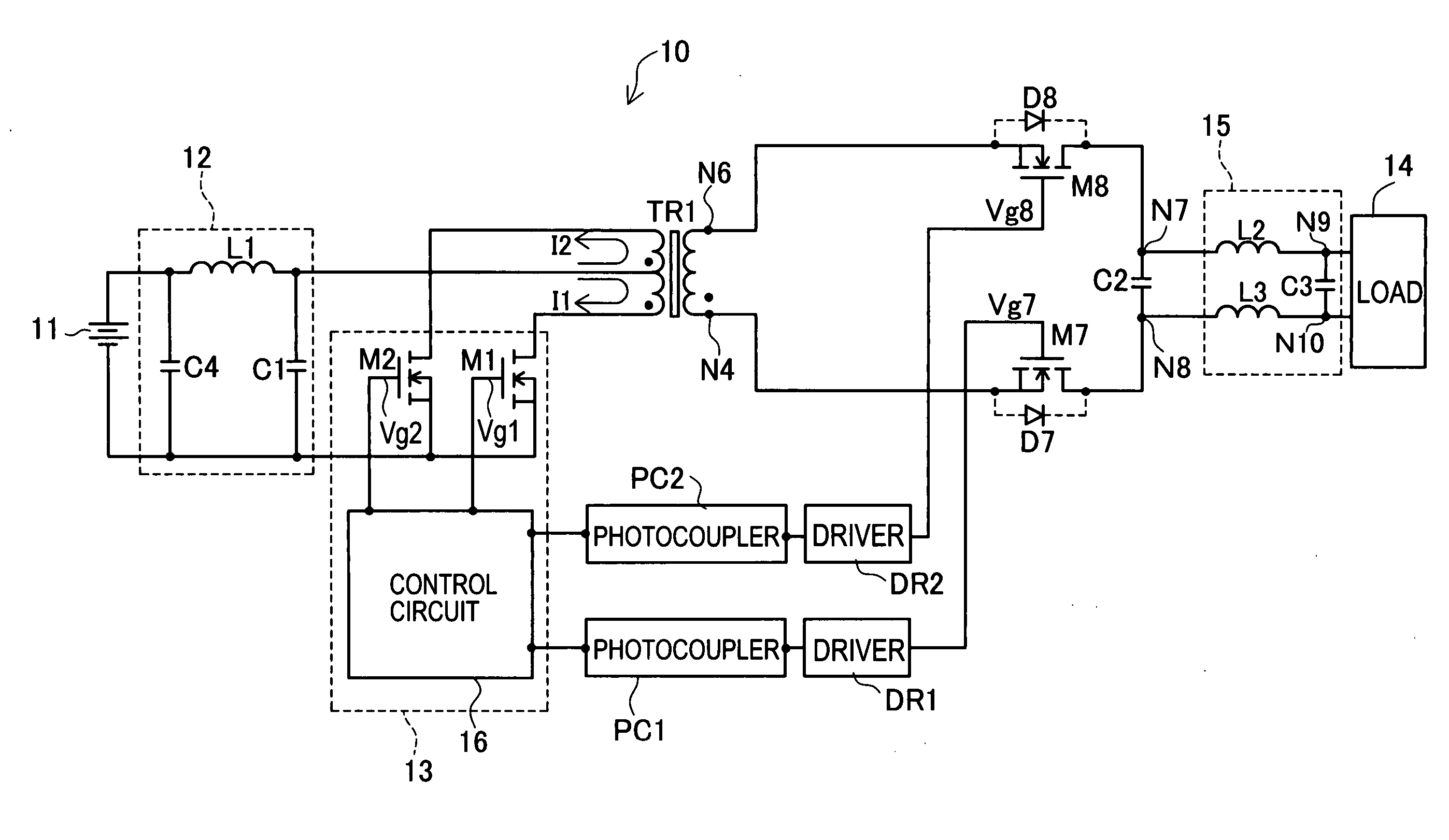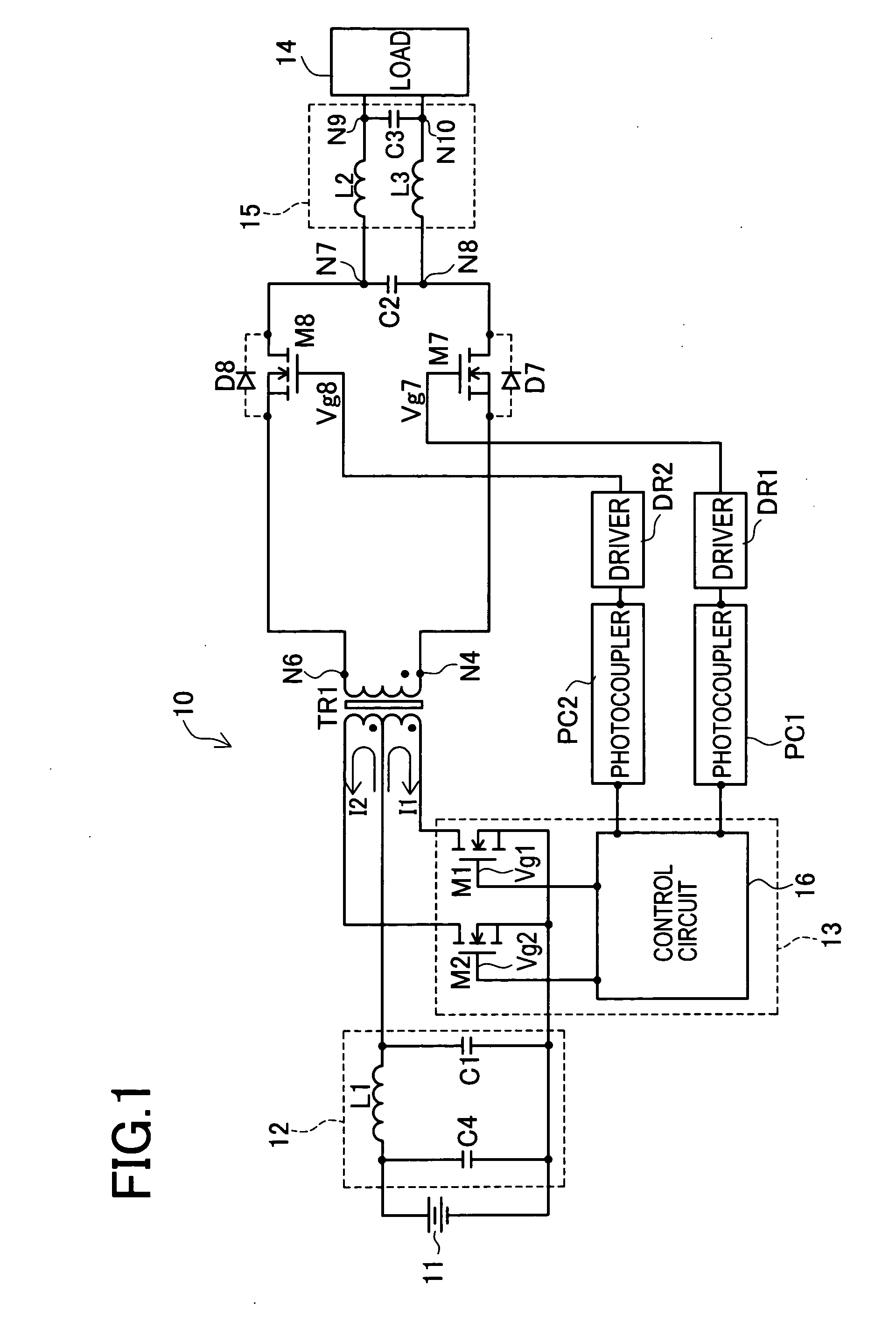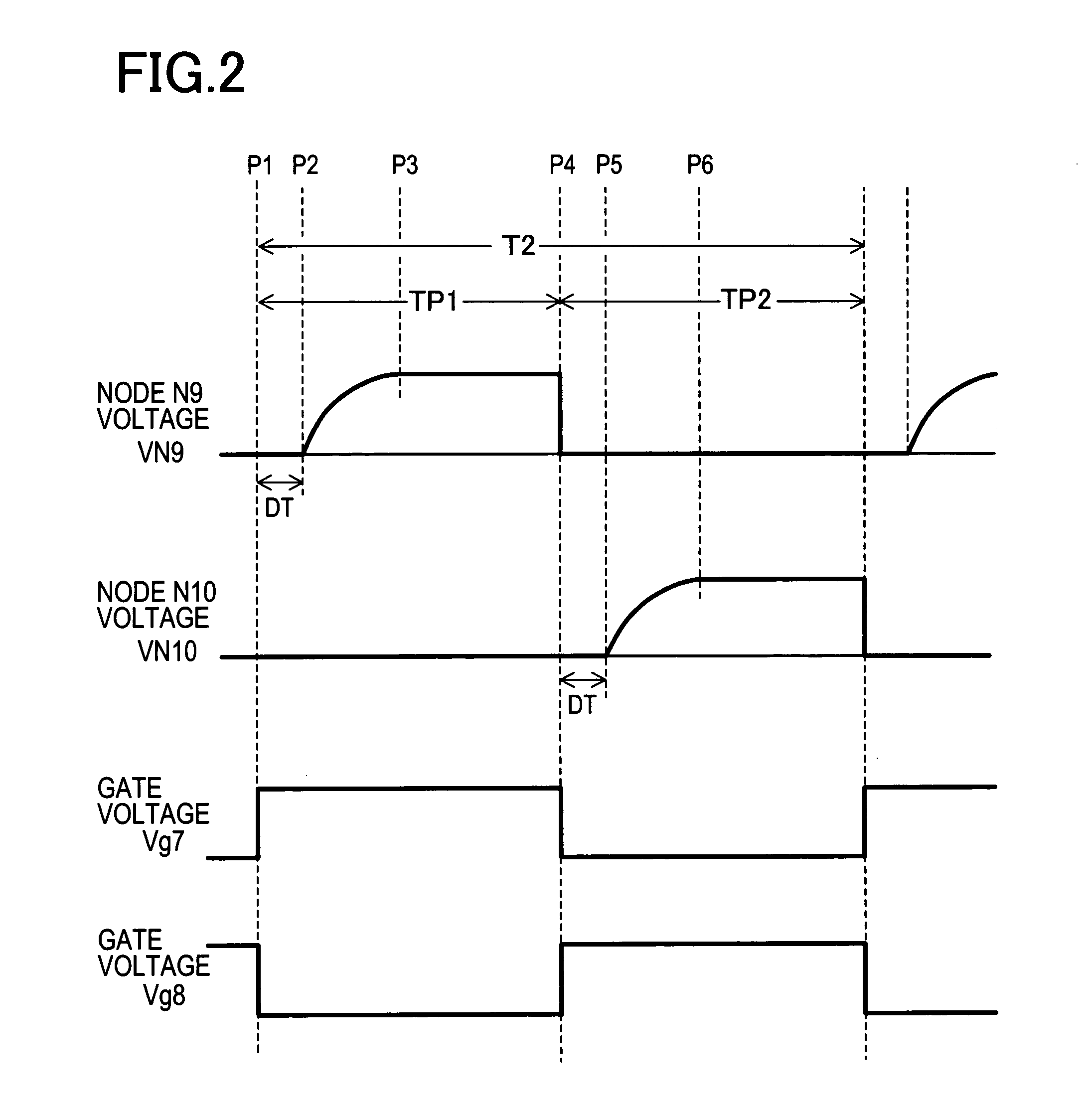DC/AC converter circuit and DC/AC conversion method
a converter circuit and converter technology, applied in the direction of dc-dc conversion, power conversion systems, instruments, etc., can solve the problems of increasing the cost of parts, increasing the circuit scale, and reducing reliability, so as to increase the circuit scale, reduce the cost, and increase the reliability
- Summary
- Abstract
- Description
- Claims
- Application Information
AI Technical Summary
Benefits of technology
Problems solved by technology
Method used
Image
Examples
first embodiment
[0064] As heretofore described in detail, the DC / AC converter 10 of the first embodiment is configured such that when a current path for flowing an electric current in the forward direction of the body diode D8 is formed in the secondary side of the transformer TR1, a voltage component having plus polarity (on the basis of the node N4) is selected from AC voltages generated in the secondary winding of the transformer TR1 by this current path. Similarly, when a current path for flowing an electric current in the forward direction of the body diode D7 is formed in the secondary side of the transformer TR1, a voltage component having minus polarity (on the basis of the node N4) is selected from the AC voltages generated in the secondary winding of the transformer TR1 by this current path. Plus and minus polarities are alternately selected at the second frequency f2 (55 Hz), thereby enabling it to supply an AC voltage of the second frequency f2 to the load 14 through the AC output filte...
second embodiment
[0074] As heretofore described in detail, the DC / AC converter 10a of the second embodiment is configured such that the source terminals of the transistors M7, M8 are connected to a common connection so that a common driver circuit can be used for application of gate voltages. This contributes to simplification of the driver circuit for gate voltage application and therefore to a reduction in the number of parts. As a result, the circuit can be scaled down and cost reduction due to the reduction in the number of parts and increased reliability etc. can be achieved.
[0075] It is obvious that the invention is not necessarily limited to the particular embodiments shown herein and various changes and modifications may be made to the disclosed embodiments without departing from the spirit and scope of the invention. In the first embodiment, the soft start for switching of the transistors M1, M2 is performed whenever the transistors M7, M8 are switched at the second frequency f2 as shown in...
PUM
 Login to View More
Login to View More Abstract
Description
Claims
Application Information
 Login to View More
Login to View More - R&D
- Intellectual Property
- Life Sciences
- Materials
- Tech Scout
- Unparalleled Data Quality
- Higher Quality Content
- 60% Fewer Hallucinations
Browse by: Latest US Patents, China's latest patents, Technical Efficacy Thesaurus, Application Domain, Technology Topic, Popular Technical Reports.
© 2025 PatSnap. All rights reserved.Legal|Privacy policy|Modern Slavery Act Transparency Statement|Sitemap|About US| Contact US: help@patsnap.com



